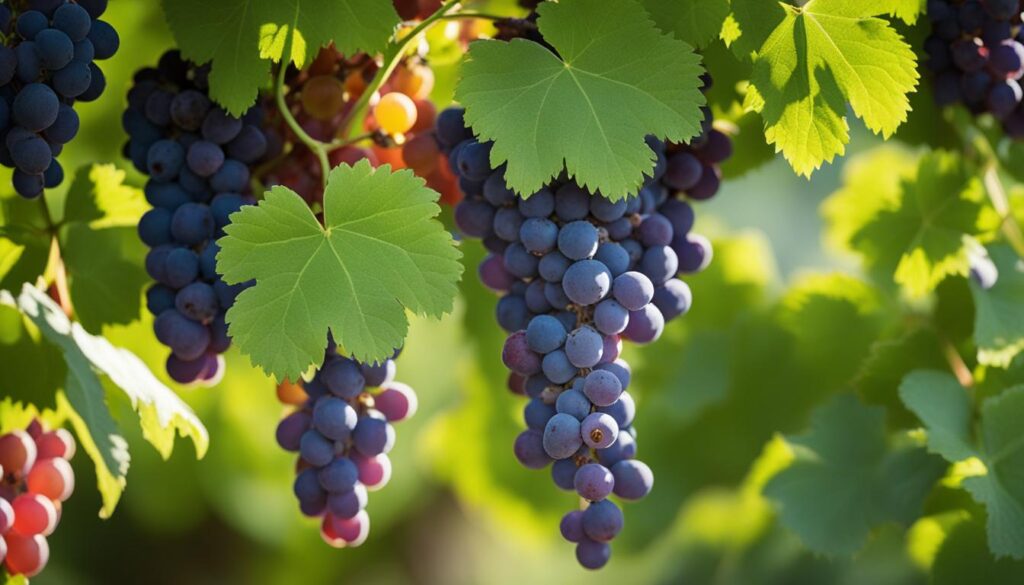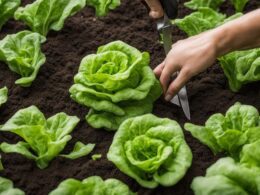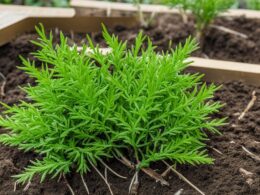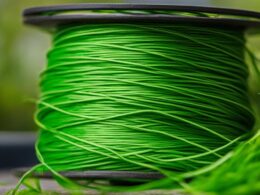When it comes to cultivating healthy and productive grapevines, companion planting is a strategy you should consider. Companion plants for grapes are those that thrive in similar growing conditions, ensuring a harmonious and mutually beneficial relationship. By selecting the right companions, you can enhance the health, vigor, and flavor of your grapevines.
Companion planting with grapevines offers a range of advantages. It can help repel pests, improve soil fertility, attract beneficial insects for pollination, and even protect grapes from sunburn. Plus, it creates a diverse and vibrant ecosystem that supports the overall well-being of your grapevines.
In this article, we’ll explore the fascinating world of companion plants for grapes, providing you with insights on suitable plants that grow well with grapevines and sharing the benefits of companion planting for grapevine health. Discover the secrets behind successful companion planting and learn how to choose the right plant partners to create a thriving garden for your grapevines.
Benefits of Companion Planting for Grapevines
Companion planting is a beneficial practice that can significantly enhance the health and vigor of your grapevines. By strategically selecting companion plants for your grapevines, you can create a thriving ecosystem that promotes grapevine health, controls pests, and improves soil fertility.
One of the key benefits of companion planting for grapevines is its role in facilitating pollination. By attracting beneficial insects like bees, companion plants ensure proper pollination of the grapevines, resulting in a more abundant crop. This natural process of pollination is essential for the formation of healthy and flavorful grapes.
In addition to aiding pollination, companion plants play a vital role in pest control for grapevines. Some companion plants emit strong scents that repel pests like leafhoppers, protecting the grapevines from infestations. Others attract beneficial predators like ladybugs, which feed on harmful pests, effectively controlling their population and preventing damage to the grapevines.
Companion planting also contributes to grapevine health through improving soil fertility. Certain companion plants, particularly legumes, have the remarkable ability to fix nitrogen, an essential nutrient for grapevine growth. As these plants grow, they naturally enrich the soil, providing grapevines with a nutrient-rich environment necessary for their development.
Moreover, companion plants offer shade to grapevines, protecting them from intense sunlight and preventing sunburn. This shade is especially beneficial during hot summer months, as it helps maintain a balanced growing environment for the grapevines, promoting healthy growth and minimizing stress.
By incorporating companion planting into your grapevine cultivation practices, you can significantly enhance the overall health and vigor of your grapevines. When grapevines are supported by companion plants, they thrive in nutrient-rich soil, benefit from increased pollination, and are better protected from pests and sunburn, resulting in healthier plants and higher-quality fruits.
Choosing the Right Companion Plants for Grapes
When it comes to successful companion planting for grapes, selecting the best companion plants is key. Compatible plants for grapevines not only enhance the aesthetics of your garden but also provide numerous benefits. Certain plants, including beans, clover, and peas, make excellent cover crops. These cover crops not only suppress weeds but also retain moisture and improve soil fertility by fixing nitrogen. By incorporating these plants around your grapevines, you can optimize the growing conditions and ensure the health and productivity of your grapevines.
Another aspect to consider when choosing companion plants for grapes is their ability to deter pests and attract beneficial insects. Basil, oregano, and hyssop are examples of aromatic plants with strong scents that repel pests and attract beneficial pollinators and predators. By strategically planting these plants near your grapevines, you can reduce the risk of pest infestations and promote a balanced ecosystem. However, it’s essential to avoid planting crops susceptible to the same pests, as this can lead to widespread infestations and damage to your grapevines.
In addition to pest control, understanding the sunlight and space requirements of companion plants is crucial for a successful plant partnership. Some companion plants, such as strawberries and asparagus, can serve as effective ground covers for grapevines. These ground covers provide shade, reducing the risk of sunburn on the grapes, while also improving soil conditions. By carefully considering the compatibility of plants and their specific roles in the garden, you can create a thriving and mutually beneficial ecosystem for your grapevines.
When practicing grapevine companion planting, keep these tips in mind: choose plants that serve a purpose, such as suppressing weeds or attracting beneficial insects, and ensure they are compatible with grapevines in terms of sunlight and space requirements. By selecting the best companion plants for grapes and creating a harmonious planting arrangement, you can maximize the overall health and yield of your grapevines, resulting in a successful and fruitful harvest.
Can Pine Needles Be Used as Companion Plants for Grapes?
Yes, pine needles can be used as companion plants for grapes. The acidic nature of pine needles helps in controlling the growth of weeds and retaining moisture around the grape plants. However, some plants dislike pine needles, and caution should be exercised to ensure they are suitable for the grapevines.










